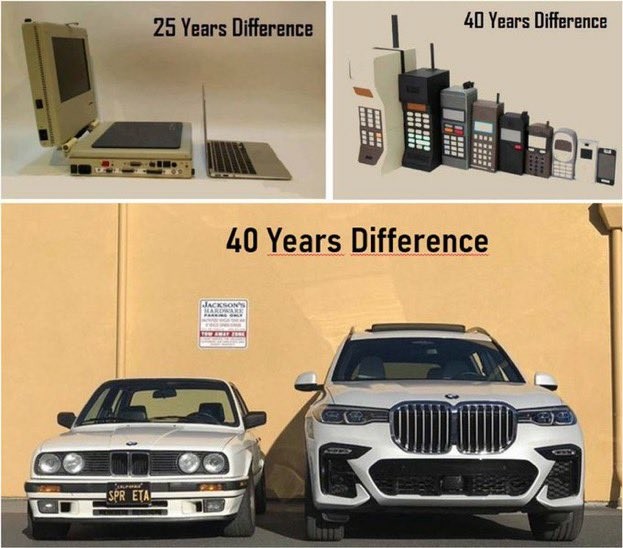this post was submitted on 28 May 2024
660 points (92.5% liked)
Degrowth
761 readers
1 users here now
Discussions about degrowth and all sorts of related topics. This includes UBI, economic democracy, the economics of green technologies, enviromental legislation and many more intressting economic topics.
founded 1 year ago
MODERATORS
you are viewing a single comment's thread
view the rest of the comments
view the rest of the comments

Wouldn't knowledge about crumple zones and need for space for things like airbags, make cars bigger?
Not saying that is the main reason, but size reduction may not be a factor to focus on its own, right?
No, vehicles have gotten larger because of the same problem as most of the issues in the United States: politics!
You see automobile manufacturers have to meet an average fuel economy across their entire fleet under the CAFE (Corporate average fuel economy) act of 1975. CAFE was a good idea as it forced the auto industry into actually improving on fuel economy year after year throughout their entire fleet or be met with steep fines for ever 0.1mpg off the target.
In 2011 CAFE was changed which directly caused the auto market we have today. See in 2011 the formula on how you'd calculate your fleet's avarage MPG got changed to now factor in vehicle footprint as a variable which auto manufactures quickly caught on to mean the larger a vehicle is the smaller their entire fleet's MPG has to be.
On top of that in 2012 "medium-duty trucks" was added as their own category with a lower MPG requirement meaning if your truck or SUV fell into that category then you would have a smaller MPG target for your entire fleet.
Now put yourself into the shoes of an early 2010s auto manufacture, would you rather design small and light vehicles that require you to meet a pretty high fuel economy level across your entire product range or would you inflate the size of your vehicles and move all R&D into finding ways to get your entire fleet classified as a medium-duty truck/SUV with a smaller MPG requirement? Of course you are going to take the latter.
The changes to CAFE in the 2010s killed small vehicles as we knew it. Ensured light duty trucks stayed dead domestically built or chicken tax be dammed. Caused the explosion of crossover SUVs to flood the market. All while making vehicles more dangerous and worse for the environment.
Thank you.
I am not from North America. I'm in India.
Here, the average car has generally increased in size a bit, but doesn't seem to be going too big. There are larger cars and they are indeed increasing in number, but due to our mixed traffic and high traffic density it is not that popular.
They are also comparing the smallest BMW of the nineties with the biggest current one.
I was wondering why every new car I see is too long and wide
Nah, we still make compact cars similar in size with the same safety features to econoboxes from 40 years ago. Like houses, people want more room in their vehicles than they had with the smaller cars plus some other misinformed choices like thinking bigger and taller means safer.
Plus along with the older small cars we also had the giant boats that got single digit mpg. It wasn't like they were all small in the past.
"with the same safety features"
Eh, no, cars from 40 years ago wouldn't pass current safety tests
Cars of the same size weight a lot more now than they used to back in the day and safety features is one of the main reasons.
Here is the same thing I posted, but reworded slightly to be more clear.
We make some cars now with modern safety feature that are big and some that are just as small as the econoboxes from 40 years ago. A Honda Fit for example is just as small, but with modern safety features.
I said nothing about weight.
In 1984 the smallest Volkswagen was the Polo, weighing 685 kg. Now it is the Up, weighing 991 kg. That's 45% more weight. Now you specifically didn't mention weight, but all that weight has to go somewhere, especially considering most materials mostly got lighter.